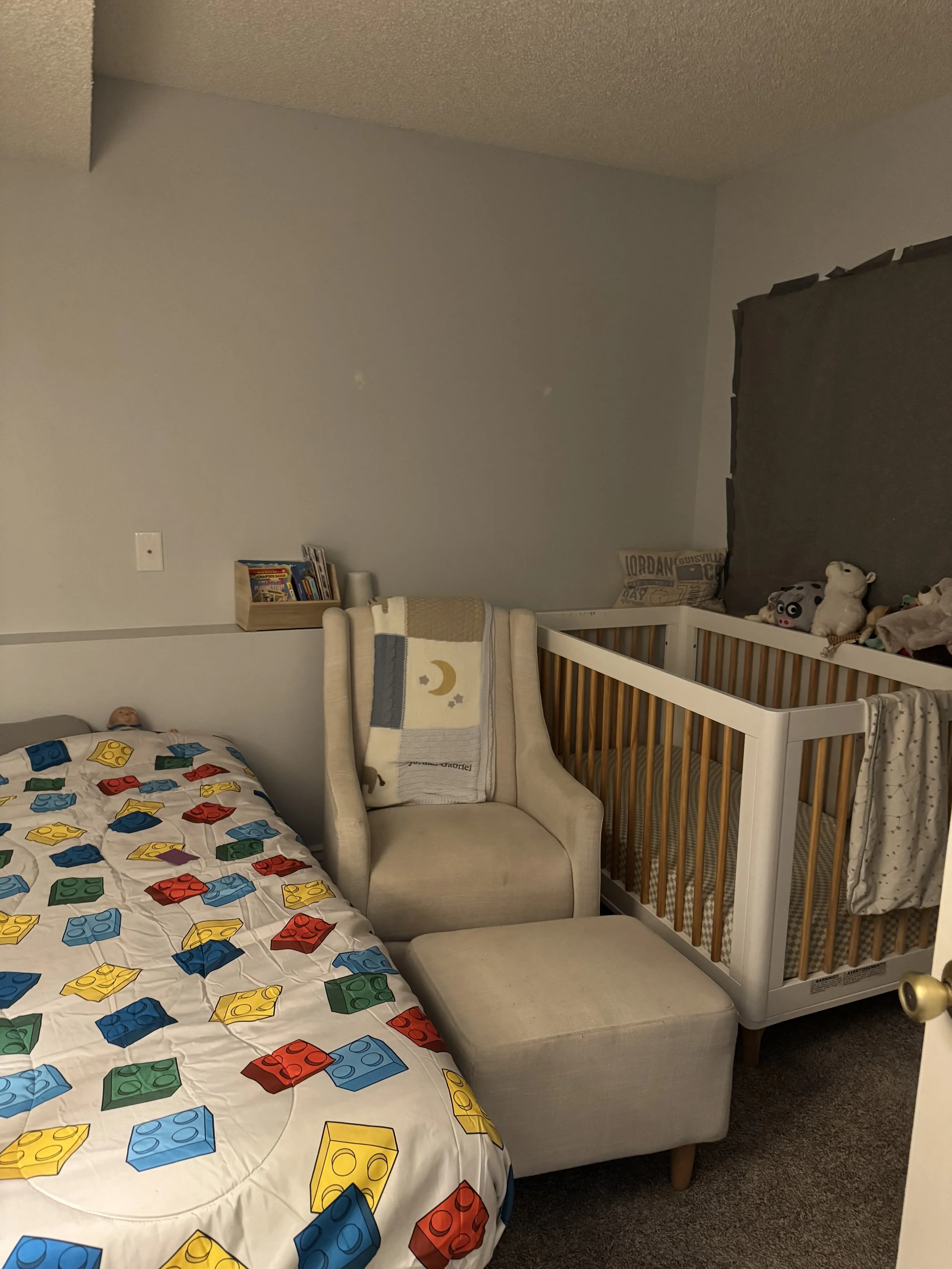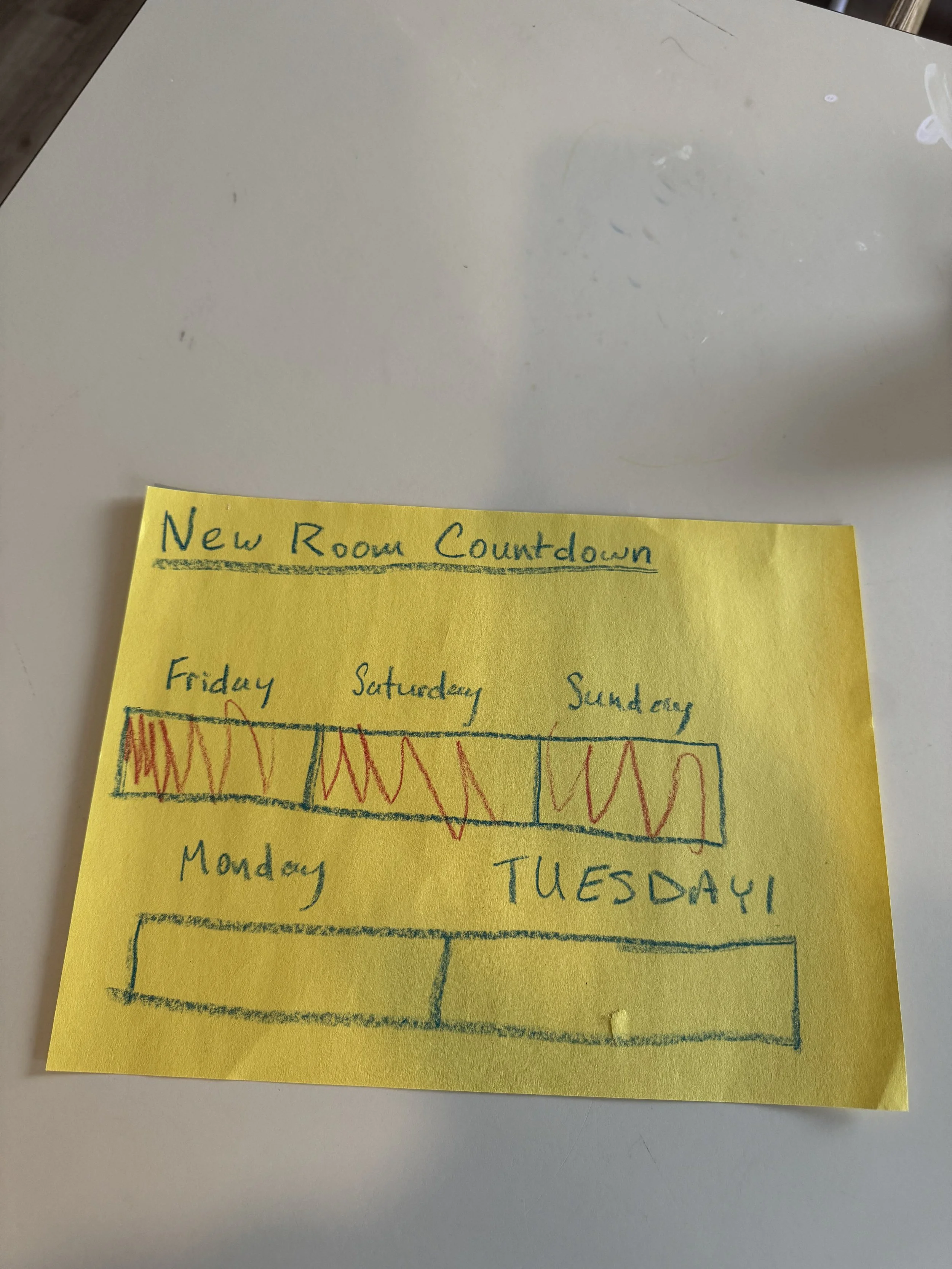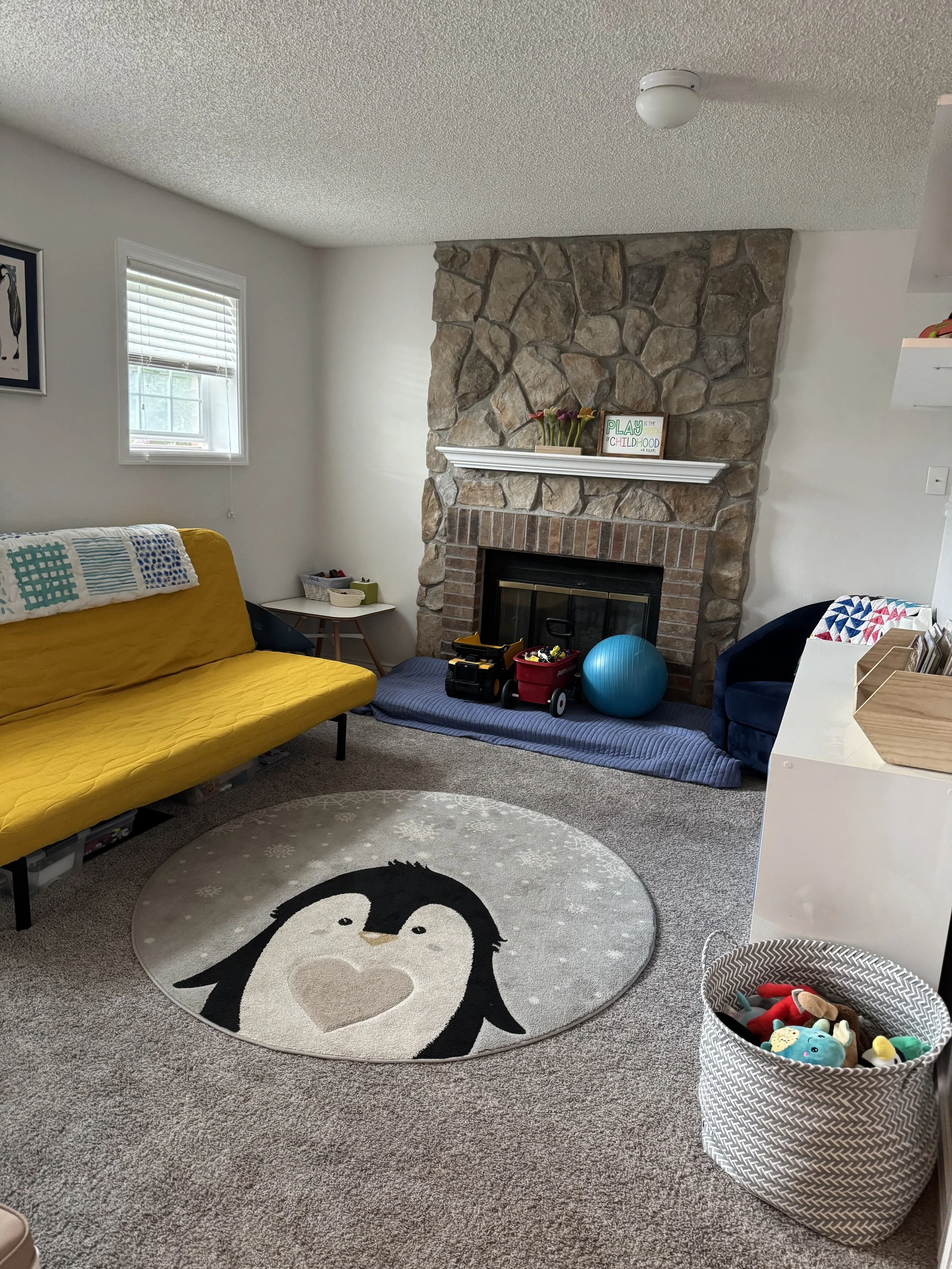How to transition kids to sharing a room
Practical Tips from a Pediatric OT
We recently made a big switch in our home… our 4.5-year-old and just-turned-2-year-old started sharing a bedroom! We were nervous (mostly about sleep), but overall, it’s gone smoother than we expected.
As a pediatric OT and a mom, I wanted to share both the behind-the-scenes of our personal experience and a few practical tips for young siblings sharing a room.
If you're considering transitioning your kids to a shared bedroom, here’s what helped us prepare, set expectations, and create a setup that actually works (even in a small space like ours!).
Why we made the switch
We decided to have our boys share a room so we could open up our other bedroom as a dedicated home office (my husband works fully-remote) and flex space. But their new shared bedroom is pretty small, and we knew we needed it to be functional without feeling crowded.
That’s why we brought in help! We hired Mindy from Boulder Organized to help us rethink the layout, maximize space for two kids sharing a room, and source bins, shelves, and storage solutions that made everything feel more open and calm. The difference was night and day! With her help, we fit two beds, two sets of clothes, toys, books, and more into a small room, while keeping the calm and functional feel.
Below, I’m breaking down the steps we took and the strategies I recommend to any parent preparing young siblings to share a room.
1. Start talking about it early
We started prepping the boys a few weeks in advance. We used a playful and positive tone to frame it as a fun new chapter. Instead of saying things like "won’t it be fun to wake up and see each other?" (which didn’t fit our sleep goals), we focused on how cool it would be to have their toys, books, and cozy spaces together.
Talking it through early helped reduce resistance and gave them time to process what was changing. When kids feel like they’re part of the plan (not just thrown into it), they’re more likely to adjust smoothly.
What helped us:
Mentioning it casually in conversations weeks in advance
Pointing out the benefits (more time together, a playroom in the other room, etc.)
Making it sound like a casual but fun adventure, not a big scary shift
2. Declutter before the move
Before we even touched the room setup, we did a major purge of toys, clothes, and random kid gear. We wanted to avoid cramming too much into a small space. Plus, clutter can lead to overstimulation, which isn't helpful when you're trying to promote new sleep routines.
3. Hire a professional organizer (if you can!)
Planning a bedroom layout for siblings in a small space can feel overwhelming. Hiring a professional organizer was hands-down one of the BEST decisions we made to maximize our space.
Mindy from Boulder Organized helped us plan the layout, source storage solutions, and create systems that would actually last. Things like:
Stackable storage bins with clear labels
Low shelves for toys so both boys can access them
Vertical storage to take advantage of wall space
Specific “zones” throughout the room
Each child now has their own area for clothing, plus we set up defined zones for books, toys, and a cozy corner with a futon and blanket where they can relax. Creating this structure within the room has helped each child feel like they have their own space, even while sharing.
Want help with your space? Boulder Organized offers virtual AND in-person services. Use code ROOTEDINROUTINE15 for 15% off any session: boulderorganized.com
4. Use visual supports to build predictability
We made a simple paper countdown calendar for our older son (4.5 years). Every night, he’d cross off a day and see how many nights were left until the big room-share move. It helped make the transition feel both real and predictable — two things young kids crave.
Other visual supports to consider:
A room diagram with where things will go (great for visual learners)
A visual schedule for the new bedtime routine
A “sleep rules” chart with pictures
Visuals help reduce anxiety, increase cooperation, and make abstract ideas (like time passing or sharing space) more concrete.
5. Practice the new morning routine
Since our 4.5-year-old usually wakes up first, we wanted him to feel confident navigating the morning without waking his brother. We role-played what to do:
Get out of bed quietly
Leave the room and go to the bathroom
Head to the playroom on his own
We role-played it like a game. He got to “pretend” it was morning, tiptoe out, and practice what came next. Doing this in advance helped him feel confident—and it’s been working fairly well so far. (We’re still working on consistency!). Role-playing routines ahead of time makes kids more likely to follow through when it’s time to do it for real.
6. Set clear and simple sleep rules
Before move-in day, we talked with our oldest about a few basic sleep expectations:
After books and lights out, it’s time to stay in bed and rest
If you wake up early, leave the room quietly and head to the playroom
And most importantly: don’t wake your brother up 😅
We kept the rules simple and used clear, age-appropriate language. (For toddlers and preschoolers, fewer rules = easier to remember and follow.)
This helped set boundaries that kept bedtime (mostly) calm and minimized disruptions. We also practiced the morning routine ahead of time so he knew what to do when he woke up.
Final Thoughts: Our Honest Experience
Our younger son had some confusion at bedtime the first few nights. He wasn't quite sure how to settle in with his brother in the same room. Meanwhile, we’re still working with our older one on quietly leaving the room in the mornings. But overall, it’s gone much better than we expected!
Transitions like this take time, but with preparation, visual supports, and a thoughtful setup, you can absolutely create a shared bedroom space that works for both kids — and supports their development and routines along the way.
If you’re considering having your kids share a room, here’s a quick recap of my top tips as both a mom and pediatric OT:
Room-Share Prep Checklist:
✅ Start talking about it early
✅ Keep the tone positive and playful
✅ Declutter before the move
✅ Consider hiring a professional organizer (it’s worth it!)
✅ Use visuals to build predictability
✅ Role-play the new routines (especially mornings!)
✅ Set clear, simple sleep expectations
Transitions like this are a big deal for young kids, but they’re also an opportunity to build new skills, encourage independence, and foster connection between siblings. With the right support and setup, it can be a smooth shift for everyone!
Need help setting up your shared kid space? I can’t recommend Boulder Organized enough. Whether you’re local or live out of state, they offer both in-person and virtual organizing services – and they truly understand how to create family-friendly spaces that are functional and calm. Use the code ROOTEDINROUTINE15 to get 15% off any service!
And if you’re getting ready to make the transition soon, click HERE to download my FREE Room-Sharing Preparation guide!
Questions about transitioning your kids to share a room? Leave a comment below!





